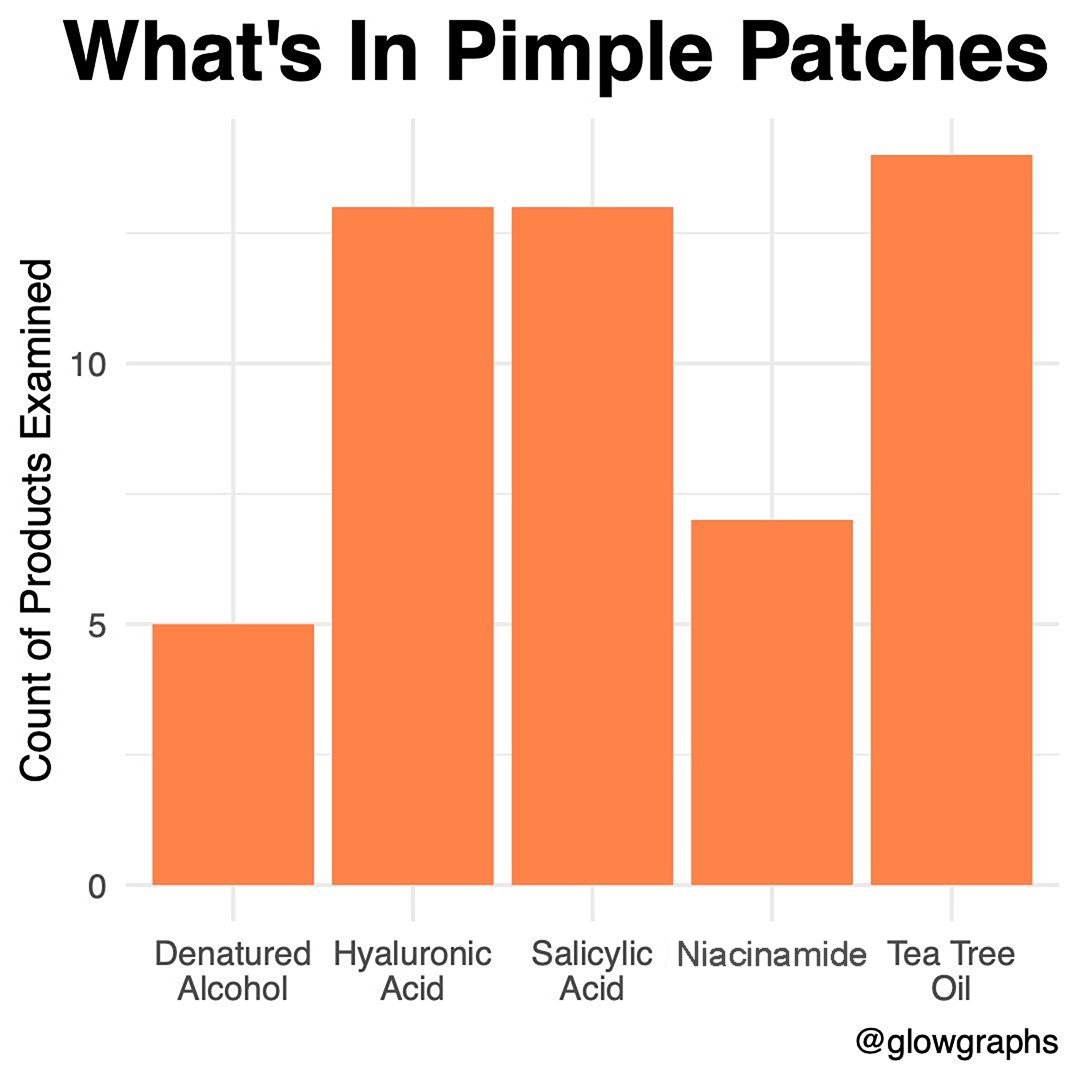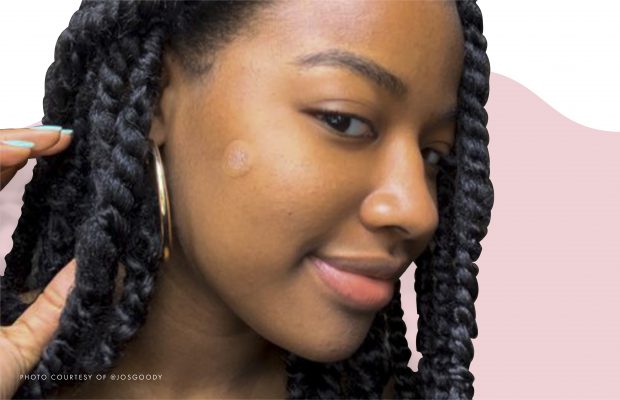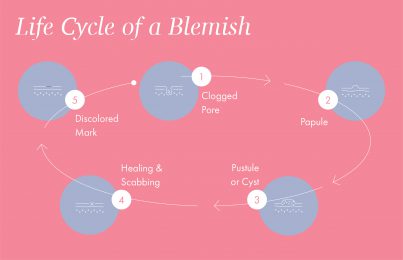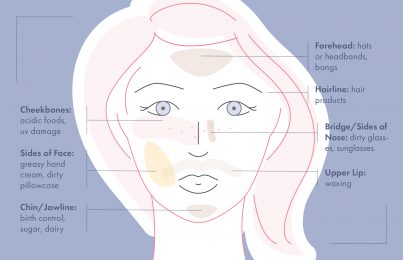Over the last thirty years of my career, I’ve had more experience treating breakouts than any other skin condition. No surprise considering almost 80 percent of ALL people experience them at some point. It’s definitely taught me a thing or two, and while the basics of healing a blemish haven’t changed much, it’s exciting to see new technology coming out that can help people manage their breakouts. Pimple patches may have seemed like a trend at first, but I definitely think they’re here to stay.
Here are my thoughts on pimple patches and how to get the best results based on which type of blemish you’re dealing with.
What Are Pimple Patches, and How Do They Work?
At the most basic level, there are two types of pimple patches: hydrocolloid and non-hydrocolloid.
Hydrocolloid bandages are traditionally used in medical settings to draw fluid out of a wound. They also speed up healing by keeping the skin underneath moist. The same concept is applied to pimple patches, which are able to draw debris, oil, and pus (aka infection) out of a blemish. As an added bonus, the healing properties mean they may help speed up recovery if you’ve picked at a blemish or have any scabbing. Many pimple patches now include anti-inflammatory and antibacterial ingredients meant to help shrink a blemish faster.
There are also non-hydrocolloid pimple patches, which don’t pull anything out but are meant to deliver acne-fighting ingredients into a blemish. I’m not as sold on these, but more about that later.
Pros of Pimple Patches
- Keep you from picking at a blemish
- Create a seal to keep out debris and bacteria
- May help “extract” (draw out) a blemish without squeezing
- Create a healing environment for less scabbing
Cons of Pimple Patches
- Not always the most environmentally-friendly
- Less cost-effective than traditional spot treatments
- Some may be too potent or irritating for certain blemishes
- Don’t prevent breakouts
The Best Pimple Patch Ingredients
According to Glow Graphs, the most common active ingredients used in pimple patches are denatured alcohol, hyaluronic acid, salicylic acid, niacinamide, and tea tree oil.

I’m often asked whether an ingredient is “good” or “bad,” but the reality is, there’s a time and place for each one. All of these ingredients are good for different things depending on which stage your blemish is at.
The Best Pimple Patch for Each Type of Blemish (and When to Use It)
When it comes to spot treatments, the fact is a lot of people are making their blemishes last longer by using them incorrectly. The reason spot treatments often don’t work is that people are applying them at the wrong time.
Here’s what happens: you get a blemish and apply a spot treatment to dry it up. The problem? Most blemishes are meant to come to the surface where the infection can be excreted through the skin—this is part of your body’s natural healing process. By applying a drying spot treatment too soon, all you’re doing is drying out the skin on top of your blemish. This traps the infection and blocks it from coming to the surface. It can also irritate the surrounding skin, resulting in a long-lasting dark mark even after the blemish heals.
Here are my recommendations for the best ingredients and the best type of pimple patch to use for every kind of acne.
Pustules and Papules
Pustules and papules are just names for the different stages of a “classic” pimple.
Papules are clogged pores that have become infected making them red, inflamed, and sometimes sore. This is what most people consider the beginning of a zit. Once papules develop a whitehead, they’re considered a pustule (i.e. the type of zit that looks like it’s ready to be popped).
Since these types of blemishes are surface-level and come to a head, using a hydrocolloid patch is the best choice here. This will help draw out the infection, which is in line with your body’s natural healing process.
A hydrocolloid patch doesn’t need active ingredients to be effective, but if it does include active ingredients, it matters which stage your blemish is at. For pustules, which have not yet come to a head, look for calming, anti-inflammatory ingredients such as salicylic acid, tea tree oil, or niacinamide. Avoid anything too drying like denatured alcohol at this stage. Once a whitehead is visible or has been extracted, it’s fine to use something that includes drying ingredients. This will get inside the pore and help “clean out” any remaining infection. (FYI tea tree oil is also great for this since it’s antibacterial—I’m a huge fan and use it in my entire Rapid Response Detox Line).
Cystic and Nodular Breakouts
Cystic and nodular blemishes are those hard, painful bumps that live deep below the surface of your skin and don’t come to a head. Since your skin’s goal is to re-absorb back into your body rather than push the infection to the surface, you’re better off using a non-hydrocolloid patch with anti-inflammatory ingredients such as salicylic acid or niacinamide that can be delivered into the blemish. Some patches even come with micro-dart technology that helps deliver active ingredients a little deeper into the skin.
A word of caution: the last thing you want to do to a cyst is cause any kind of irritation, including drying out the surrounding skin. This will put you at risk for increased hyperpigmentation and dark marks (something to be especially mindful of if you have a deeper skin tone). I would definitely avoid denatured alcohol as an ingredient in this case since it’s so drying.
Speaking of irritation, it’s possible for the adhesive on the sticker to be irritating (especially if you’re using a few patches back-to-back). Also, while micro-darts are very small and unlikely to cause any damage, they wouldn’t be my first choice since I think cysts should be treated as gently as possible. Instead, I prefer a soothing topical treatment like Anti Bump Solution.
That said, I know a lot of people have anecdotally reported that patches work on their cystic acne! If it’s something you’re interested in, I encourage you to try it out and simply keep an eye out for dryness, flaking, or irritation. If you consistently struggle with hormonal blemishes (especially on your chin and jawline), here’s what you can do.
Blackheads and Whiteheads (Clogged Pores)
Blackheads and whiteheads are both types of non-inflamed clogged pores. (Read my guide to learn about the different types of clogged pores.) Since there isn’t any infection present, pimple patches won’t do you much good here. The best course of action against clogged pores is keeping the skin well-hydrated, exfoliating properly, and getting manual extractions when needed. Learn more about how to get rid of clogged pores.
Dark marks
Technically not acne but since the two go hand-in-hand, I thought I’d give dark marks an honorable mention! There are patches infused with ingredients like kojic acid, vitamin C, and licorice extract (all great for fading the look of hyperpigmentation).
The thing about fading dark marks from blemishes is that it takes time and requires consistency. Yes, you could put a patch on it every day until it fades, but it’ll be cumbersome and probably expensive. In my opinion, you’re better off regularly incorporating a vitamin C serum, exfoliating acids, and possibly retinol into your routine. This will give you better results overall, not to mention it’s much more convenient if you have more than just a few small dark marks. And finally, don’t forget that sunscreen is your number one defense against hyperpigmentation!
How to Apply a Pimple Patch
I always recommend applying your spot treatments as the LAST step in your routine, and pimple patches are no exception. After applying your moisturizer, wet a Q-tip and gently wipe down the area you want to adhere the patch to. Learn more about how to apply spot treatments.
Bottom Line
My final verdict on pimple patches: they’re great as long as you use them on the right blemish at the right time. I think they work best on surface-level inflammatory acne that comes to a head. In this case, the main benefit you’re getting from a patch is the hydrocolloid technology, which helps gently draw out the infection while keeping the surrounding skin healthy and moist.
Some people seem to get good results using them on deep cystic acne, but I prefer a more traditional spot treatment for this since they’re less likely to cause unnecessary irritation. As for non-inflammatory acne (like whiteheads or blackheads) and dark marks, pimple patches aren’t going to be your most effective option.
Finally, keep in mind that pimple patches are not an acne-prevention strategy. They can be used really effectively on individual blemishes but if you’re breaking out consistently, you really want to make sure you have a good routine for acne-prone skin.
Want to know more about managing acne? Here’s what to do when you start breaking out suddenly.
Celebrity Esthetician & Skincare Expert
As an esthetician trained in cosmetic chemistry, Renée Rouleau has spent 35 years researching skin, educating her audience, and building an award-winning line of products. Her hands-on experience as an esthetician and trusted skin care expert has created a real-world solution — products that are formulated for nine different types of skin so your face will get exactly what it needs to look and feel its best. Trusted by celebrities, editors, bloggers, and skincare obsessives around the globe, her vast real-world knowledge and constant research are why Marie Claire calls her “the most passionate skin practitioner we know.”



